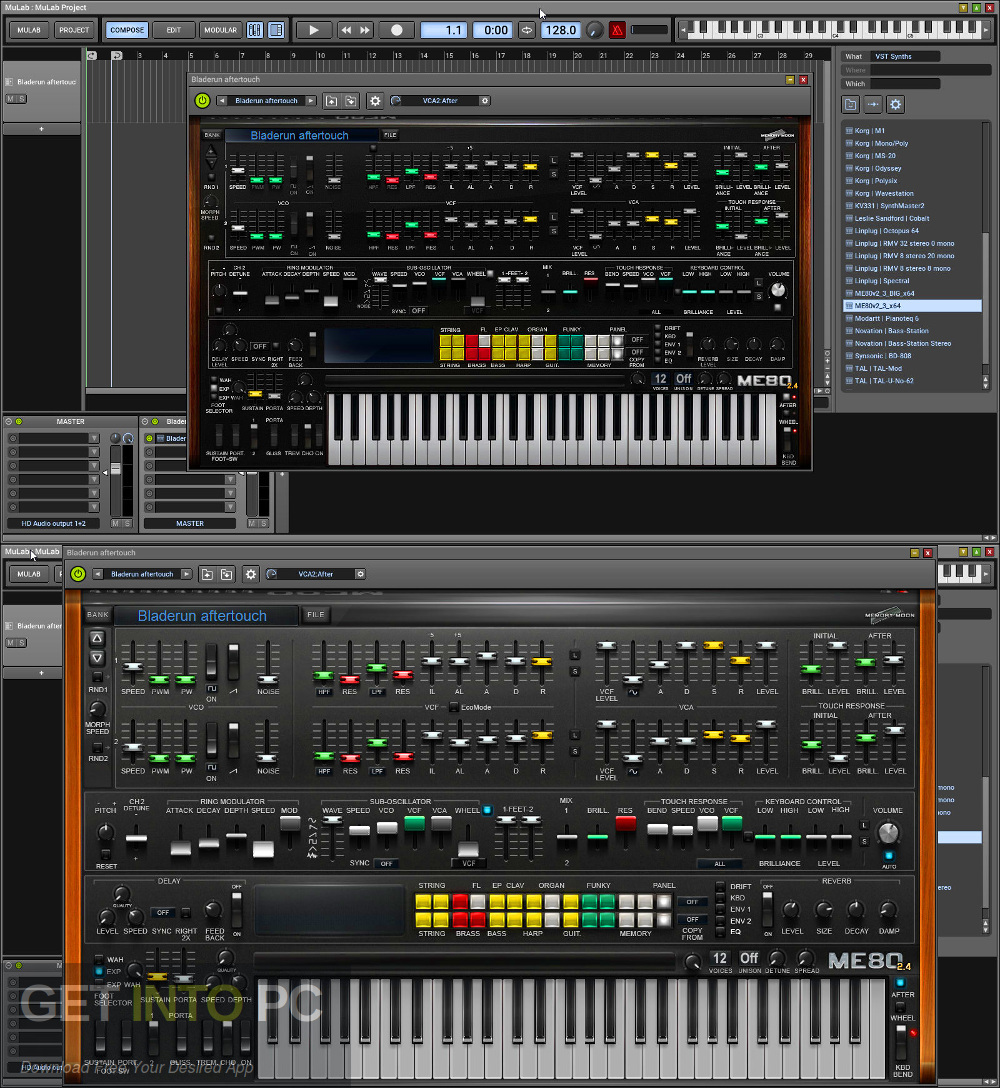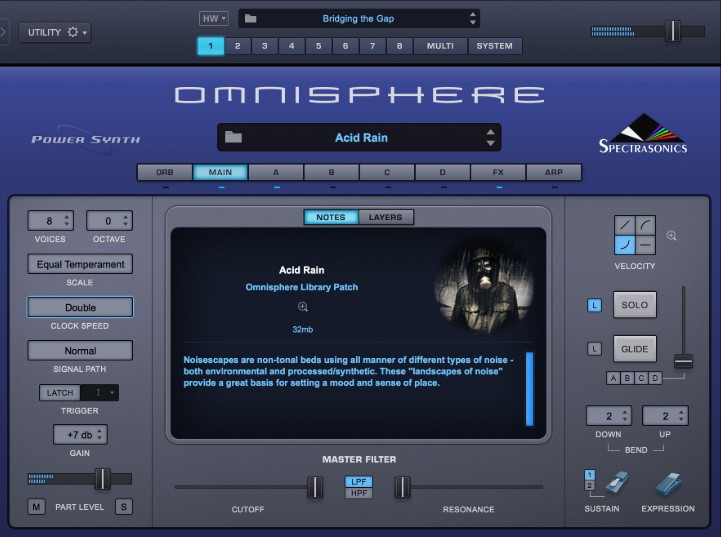
VST 4 FREE - Free Audio Plug-ins and Archives Free audio plugins archive - Instruments and effects for audio software. Plugins for Cubase, FL studio, Reaper, Ableton and other VST/AU platforms. Arguably the finest autotune and vocal harmonizer VST effects plugin that one can snag for.
A downloadable sound design tool for Windows and macOS
MIDI Program Change preference is now saved into session instead of global preferences, so each instance can now use different MIDI channels. It is also saved in the user default preset. Improved convolution performance for large impulse responses. For a complete amp simulation solution with built-in effects, check out Blue Cat's. . E guitar vst free.
Vst 2.4 Plugin
Ribs is a powerful granular FX/synth that provides detailed control over it's granular engine. You can glitch, scratch, filter, destroy and reconstruct sounds in many different ways!

VST 4 FREE - Free Audio Plug-ins and Archives Free audio plugins archive - Instruments and effects for audio software. Plugins for Cubase, FL studio, Reaper, Ableton and other VST/AU platforms. Arguably the finest autotune and vocal harmonizer VST effects plugin that one can snag for.
A downloadable sound design tool for Windows and macOS
MIDI Program Change preference is now saved into session instead of global preferences, so each instance can now use different MIDI channels. It is also saved in the user default preset. Improved convolution performance for large impulse responses. For a complete amp simulation solution with built-in effects, check out Blue Cat's. . E guitar vst free.
Vst 2.4 Plugin
Ribs is a powerful granular FX/synth that provides detailed control over it's granular engine. You can glitch, scratch, filter, destroy and reconstruct sounds in many different ways!
Ribs is available as VST and .exe for PC, and AU, VST and .app for OS.
Ultrahypershort Tutorial:
- Put Ribs on a track and turn FX mode on ( on the top left of the UI)
- Add or route some audio to the track
- Push play in the DAW
- Press Ribs' tab tops - the buffers will start filling with the track's output and a sound will appear
Currently Ribs does not support loading .wav files and saving buffer contents. Adding vst 2.x plugins streamlabs obs.
Foobar2000 Vst 2.4 Adapter
NB1: For hosts with routing range restrictions (e.g. Ableton Live) right-click the multiinput button - channel config - select stereo channels 2-4 and you should be fine. See this video as an example: https://www.youtube.com/watch?v=l4Gbu..
NB2: For hosts that don't allow audio and MIDI routing to the same track (e.g. Cubase) Ribs will work properly in FX mode only.
Free cymbal vst. Disclosure: When you buy through our links, we may get a commission at zero cost to you.Have you ever wondered if you could create drum patterns yourself without scrolling through thousands of sample libraries?
Free harmonium vst for fl studio; harmonium vst; Harmonium plugin; Share this: Facebook; Twitter; Pinterest; Related Posts. Kx-PolyMod; Abstractor; Retro Boy; Pulsar 4; Microwave Oven. A blog providing electronic music makers with archives of free vst plugins for fl studio, free vst plugins download, free plugins for pro tools, free. VST 4 FREE - Free Audio Plug-ins and Archives. Harmonium is a free 19th century Harmonium plugin developed by Softrave. Instruments Effects MIDI Hosts What's new Harmonium by Softrave. 3.8 / 5 (22 votes) Show more Homepage Win32 VST. VST 4 FREE - Free Audio Plug-ins and Archives Free audio plugins archive - Instruments and effects for audio software. Plugins for Cubase, FL studio, Reaper, Ableton and other VST/AU platforms. Vst 4 free harmonium.
Here are some SoundCloud demos.
Please see the tutorial videos:
| Status | Released |
| Category | Tool |
| Platforms | Windows, macOS |
| Rating | |
| Author | hvoya audio |
| Tags | au, audio, effect, granular, sound-design, synth, VST |
Download
Click download now to get access to the following files:
Community
In 2013, Steinberg announced that they would no longer support the software development kit (SDK) for the VST2 plug-in format, but the SDK itself would still be available as a subset of the VST3 SDK. Then in May 2018, Steinberg announced that, starting in October, a subset would be eliminated. If you are impatient and just want to summarize this article, here they are: VST 2.4 plugins will work great for a very long time. Most hosts are more than happy with VST3 versions. They are at least as good as VST 2.4 versions and may even offer some advantages.
So how important is migration to VST3? Let's start by breaking down a few myths.
MYTH 1: VST3 Plugins Are More Effective
VST is an interface specification of how the plugin interacts with the host, so performance depends on the code, not the specification. Plugins VST2.4 and VST3.0 have a common code base, and almost all internal code is identical, therefore, this does not affect the processing of audio material.
MYTH 2: VST3 plugins are not more effective
Plugins – no, but they can be disabled when the data is not processed. This is not unique to VST3; Developers were able to implement this using old technologies. However, VST3 is a standardized method that works as long as it is implemented by both the host (see Figure 1) and the plug-in manufacturer (like MIDI, manufacturers can choose what to support in the VST3 specification – for example, just because the keyboard supports MIDI does not mean that it implements a polyphonic subsequent touch).
MYTH 3: VST3 is buggy, so it's best to stick with VST 2.4 now
The VST3 specification has been around for 10 years, and implementation has been relatively slow since the early release was stable. But during these 10 years, manufacturers improved their code and, in general, fixed any possible errors, so VST3 plugins are as reliable as v2.4. Remember, the problem is not in the specification itself, but in its implementation. You can set both types if you want, because plugins themselves usually do not take up much space (their libraries and samples take the place of tools). But also note that many companies are more actively developing and debugging their versions of VST3, while earlier versions are updated with delays.
MYTH 4: Now that there is VST3, VST 2.4 plugins are deprecated
Any host can freely support VST 2.4 and / or VST3 (Fig. 2). If the program supports your VST 2.4 plugins, it will continue to do so unless the manufacturer specifically removes this support. Please note that the lower part of the graphic icon is different for the two types, and if you click the plugin, the supplier, type and category, as well as a link to the manufacturer's website are displayed in the information bar at the bottom. In the end, developers can stop releasing VST2.4 as soon as VST3 captures most of the music market.
Berimbau vst free. Roll the dice with the built-in randomizer to quickly explore countless sonic landscapes. Flutes (Majingu, Djafe, Goat), Guitars (Afro Steel, Roots African, Tchad Nylon), Large Drums (Beninese, Guinean Baga & Kobo, Guinean Toma, Malian, Ouagadoudou, Tanzanian, Togolese, Zairian), Djembe (Wood, Modern Skin, Mozambique), Percussions (Body Bells, Cruche, Fedounoum, Plastic & Wood Rainstick, Rattle, Shekere, Talking Drum, Tchangotche), Udu (Large & Small), Balafon (8 instruments), Bamboo Sax (3 instruments), Kalimba, Kora (2 models and a Valiha), Mbira (Dzavadzimu, Nyunga, Zimbabwe), Ngoni Donso, Sanzas (7 models) 650 Loops & Phrases.
MYTH 5: Ableton Live Cannot Use VST3 Plugins
Although there is no built-in support for VST3, the Metaplugin DDMF plugin will help to install them. You can put it as a plug-in in Ableton Live, and then put VST3 in it.
MYTH 6: You must install the VST3 plugins in a specific location on the system drive
This is a preference, not necessarily an iron rule. Actually, this may be good, because when you create a system disk image, you back up your plugins as well. But you can usually install them wherever you want (in Windows, directory connections can point to the standard VST3 folder on any drive).
MYTH 7: You must have VST3 side chain plugins
Not necessary. Several hosts and plugins have implemented side binding with VST 2.4 over the years.
MYTH 8: VST3 has many interesting new features that are not available in versions of VST 2.4
Potentially yes. If a product was developed exclusively for VST3, it is likely to take advantage of at least some improvements. However, during the transition, many developers created VST3 plug-ins with the same basic features as their version of VST 2.4.
MYTH 9: VST3 is no different from VST 2.4. It is just a hoax; there are no real improvements
VST3 is a remake of VST 2.4 and, in fact, is a new platform.
Vst 2 Vs 3
Consider some of the benefits:
Vst 2.4
- A sample of precise automation. The manufacturer should implement this, but this is a significant change compared to VST 2.4.
- Hierarchical plugin and classification of automation parameters. Some people think that categorizing plugins (Fig. 3) is a drawback, because they cannot organize them as they like (although most hosts provide some kind of manager, it doesn't matter in this case). But when you want to automate parameters, VST3 plugins can make life much easier if the manufacturer used the options for categorizing parameters.
- Grouping all filter automation parameters into the Filter category is much better than a huge list of automation parameters with a seemingly random arrangement.
VST3 SDK is a free technology available to any developer. - Dynamic I / O allocation. VST 2.4 plugins used to have a fixed number of inputs and outputs, but this is no longer the case – VST3 plugins can adapt to the channel configuration in which they are delivered. Place the plug on the stereo bus and it will be stereo. Insert it on the surround bus and it will be surround. You can also create sound buses, which simplifies cross-modulation and vocoder. But then again, these features are manufacturer dependent.
- With VST3 you can turn off unused outputs, but turn them back on if necessary.
- Resize the window. This is certainly welcome, given that monitors have a wider range of resolutions than when VST was introduced back in 1996 (and for the future, 'Macarena' was better than the song of the year. Just a quick note).
- Virtual instruments support several MIDI ports that you can switch on the fly. And who doesn't like a few MIDI ports?
It is much easier to search and find your plugins. VST3 have the suffix .vst3 instead of the common suffix. - Plugins can have a dedicated 'event bus'. Although it is currently intended for MIDI control input, there is no reason why it could not comply with any future non-MIDI standard.
- VSTXML for remote controllers. No, the cat didn't walk on my keyboard. VSTXML is a protocol that simplifies the creation of remote controllers for audio and MIDI applications. It can even display non-editable parameters such as measurement.
- Multilingual design. All user-oriented character strings are presented in Unicode format, which allows displaying characters in any language (including Russian – which means 'including Russian') to facilitate localization.
Vst 2.4 Download
That sounds great, right? But remember, VST3 is not a specification similar to AES / EBU interfaces or the Red Book CD – it is a set of well thought out recommendations.
